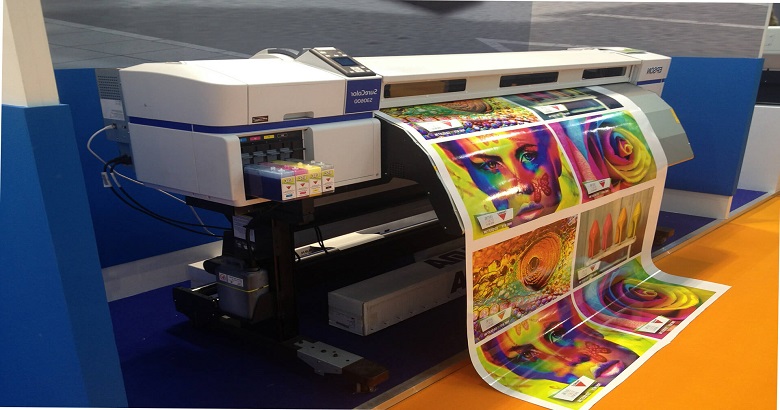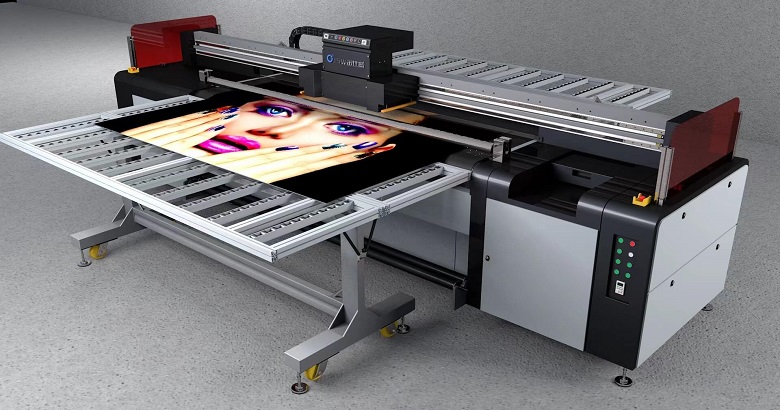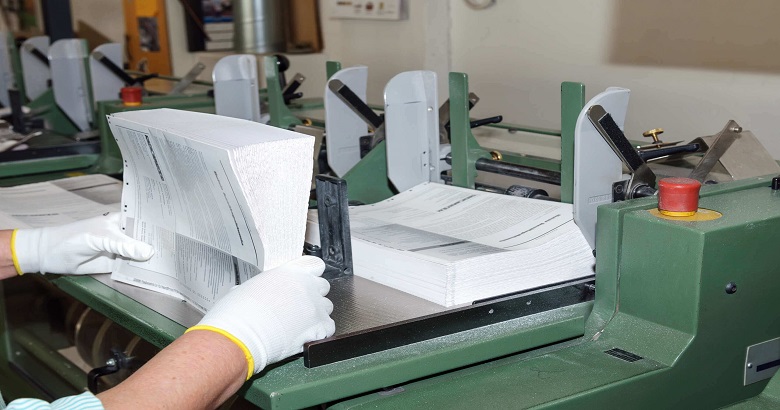“The printing press is the greatest weapon in the arsenal of the modern mind.”
When it comes to publishing books, the printing method you choose can significantly impact the final product. From the quality of the print to the cost of production, the printing method you select will play a crucial role in the success of your book. In this blog post, we’ll explore the various printing methods available for books and help you determine the best option for your needs.
Traditional Offset Printing
Offset printing is one of the most common and well-established book printing methods. This technique involves transferring an image from a plate to a rubber blanket and then to the printing surface, typically paper. Offset printing is known for its high-quality results, producing crisp, clear images and text.
One of the key advantages of offset printing is its ability to handle large print runs efficiently. This makes it an excellent choice for publishing books with high demand or publishers planning to produce multiple title editions. Additionally, offset printing allows for various customization options, including specialized inks, coatings, and finishes.
However, offset printing can be more costly for smaller print runs, as the setup and plate-making process can be time-consuming and expensive. This means offset printing may not be the most cost-effective option for self-publishers or authors with limited budgets.
Digital Printing

In recent years, digital printing has become an increasingly popular option for book publishing. This method uses digital technology, such as laser or inkjet printers, to produce high-quality prints directly from digital files.
One of the primary advantages of digital printing is its versatility. Digital printing allows for short-run and on-demand printing, making it an excellent choice for self-publishers, niche authors, or those with unpredictable demand. This printing method also eliminates the need for costly setup and plate-making, making it a more affordable option for smaller print runs.
Additionally, digital printing offers greater flexibility in terms of personalization and customization. This method allows you to easily incorporate variable data, such as unique covers or personalized content, into your book.
However, digital printing may not be the best choice for high-volume book production, as the per-unit cost can be higher than offset printing. Additionally, the image quality produced by digital printing, while excellent, may not match the precision and consistency of offset printing for some applications.
Print-on-Demand (POD)
Print-on-demand is a specific type of digital printing that has gained significant popularity in the publishing industry. With POD, books are printed and bound only when an order is placed, eliminating the need for large inventory storage and reducing waste.
The primary advantage of Print-on-Demand is its cost-effectiveness, especially for self-publishers and small-scale authors. This method eliminates the need for upfront investments in printing and warehousing, as books are produced as they are sold. This makes it an attractive option for authors with limited budgets or uncertain book demand.
Furthermore, Print-on-Demand offers a high degree of flexibility, allowing for easy updates, revisions, and reprinting of books. This is particularly beneficial for authors wanting to change their content or cover design over time.
However, the quality of Print-on-Demand books may not be as high as offset or digital printing, particularly in terms of paper quality, binding, and overall production value. Additionally, the per-unit cost of print-on-demand books can be higher than that of larger print runs.
Hybrid Printing

Hybrid printing combines offset and digital printing techniques, offering the best of both worlds. This approach involves using offset printing for the book’s main content and digital printing for specific elements, such as covers, inserts, or personalized content.
The key benefit of hybrid printing is its ability to leverage the strengths of both printing methods. Offset printing can be used for the bulk of the book, ensuring high-quality, consistent printing, while digital printing can be employed for more specialized or customized components.
This hybrid approach can be particularly useful for authors or publishers requiring large-scale production and targeted customization. It allows for cost-effective printing of the main book content while still providing the flexibility to incorporate personalized or unique elements.
However, hybrid printing may involve a more complex production process and require additional coordination between different printing technologies. It’s essential to carefully evaluate the specific needs of your book project to determine if a hybrid approach is the most suitable option.
Factors to Consider When Choosing a Printing Method
When selecting the best printing method for your book, there are several key factors to consider:
- Print Run Size: The size of your print run will significantly impact your choice of printing method. Offset printing is generally more cost-effective for larger print runs, while digital printing and Print-on-Demand are better suited for smaller quantities.
- Quality Requirements: Offset printing may be the preferred option if you require the highest possible print quality, with exceptional image and text reproduction. Digital printing, on the other hand, is excellent for applications where the quality is still high but not necessarily the primary concern.
- Customization and Personalization: If you need to incorporate variable data, such as personalized covers or content, digital printing, and Print-on-Demand are the more flexible choices.
- Turnaround Time: Digital printing and Print-on-Demand generally have shorter turnaround times than offset printing, which can benefit time-sensitive projects.
- Budget: Consider your overall budget, including not only the printing costs but also any associated expenses such as warehousing, shipping, and inventory management. Digital printing and Print-on-Demand tend to have lower upfront costs, making them more accessible for authors and small publishers.
Final Thoughts
Choosing the best printing method for your books can be complex, as each option has unique advantages and drawbacks. By carefully considering the factors outlined in this blog post, you can make an informed decision that aligns with your publishing needs, budget, and desired outcomes.
Remember, there is no one-size-fits-all solution when it comes to book printing. The best approach will depend on the unique requirements of your project, your target audience, and your overall publishing strategy. Take the time to evaluate your options, weigh the pros and cons, and select the printing method that will help you achieve your book’s highest quality, cost-effectiveness, and success.
Frequently Asked Questions
1. What are the key differences between offset printing and digital printing for books?
Offset printing is known for its superior image quality, consistency, and cost-effectiveness for larger print runs. Digital printing, on the other hand, excels in terms of flexibility, customization options, and shorter turnaround times, making it more suitable for smaller print runs and on-demand publishing. The two choices depend on print volume, quality requirements, and budget.
2. How does Print-on-Demand (POD) differ from traditional printing methods?
The primary advantage of Print-on-Demand is its cost-effectiveness and elimination of upfront investments in printing and warehousing. With POD, books are printed only when an order is placed, reducing the risk of excess inventory and waste. This makes it an attractive option for self-publishers and authors with uncertain demand. However, the quality of POD books may not be as high as offset or digital printing, and the per-unit cost can be higher for smaller volumes.
3. What are the benefits of a hybrid printing approach for books?
Hybrid printing combines the strengths of offset and digital printing, allowing publishers to leverage the high-quality, consistent printing of offset for the main book content while using digital printing for customized or personalized elements. This approach can be particularly useful for authors or publishers requiring large-scale production and targeted customization, such as personalized covers or inserts. The hybrid method can help optimize production costs and quality while maintaining flexibility.
4. How can authors and publishers determine the most cost-effective book printing method?
The most cost-effective printing method will depend on various factors, including the print run’s size, the book’s specific requirements (e.g., quality, customization), and the overall budget. Generally, offset printing is more cost-effective for larger print runs, while digital printing and Print-on-Demand are better suited for smaller quantities. Authors and publishers should carefully evaluate their needs, compare the per-unit costs, and consider additional expenses, such as warehousing and shipping, to determine the most cost-effective solution.
5. What are the key considerations when choosing a printing method for a book's second edition or updated version?
When publishing a second edition or an updated book version, the choice of printing method may differ from the initial release. Factors to consider include the expected demand for the new edition, the extent of the changes (e.g., minor updates vs. significant revisions), and the need for flexibility in making future changes. Digital printing and Print-on-Demand may be more suitable for revised editions, as they allow for easier and more cost-effective updates compared to the setup required for offset printing.



